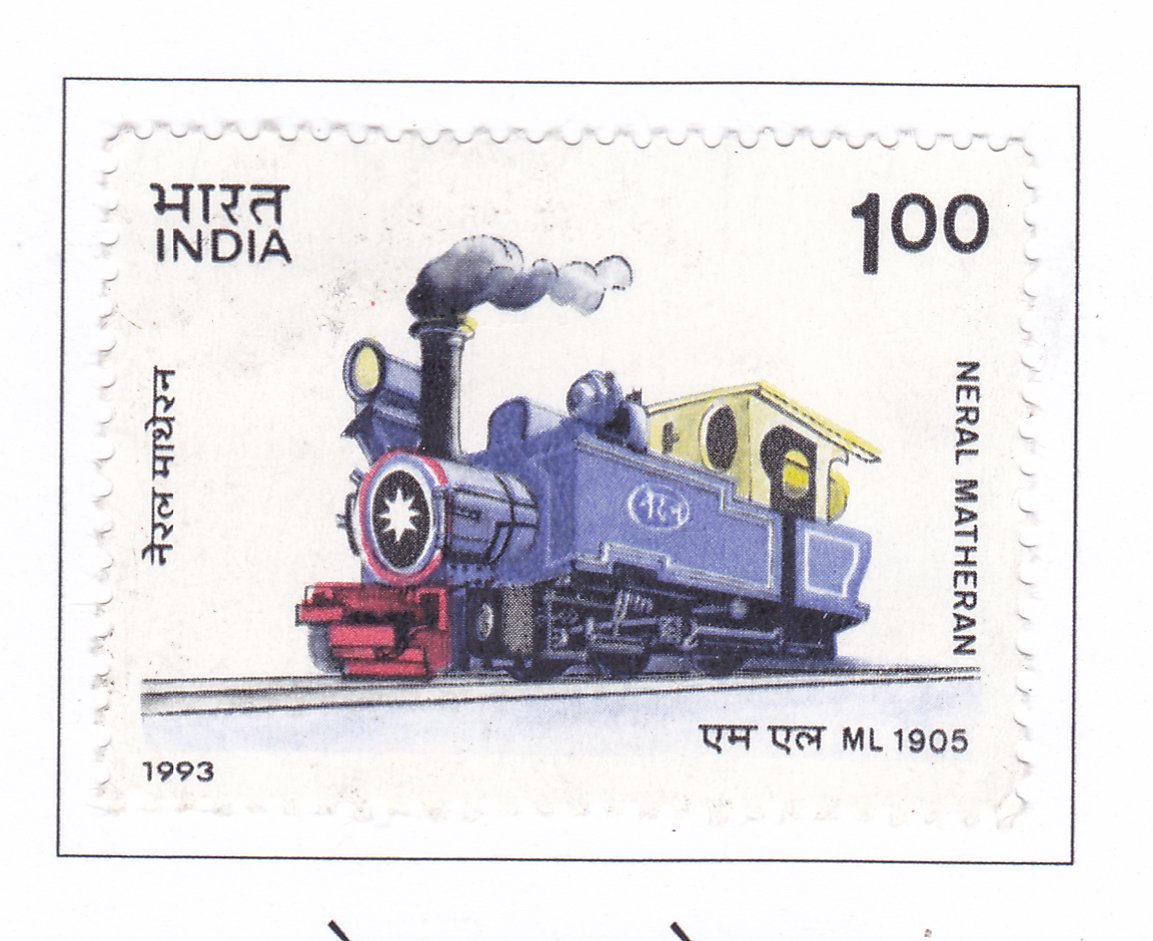Mountain Locomotives: Neral Metheran

Technical Data
| Stamp Set | Mountain Locomotives |
|---|---|
| Date of Issue | April 16, 1993 |
| Denomination | Rs. 1 |
| Quantity | 1,000,000 |
| Perforation | comb 13½ x 13 |
| Printer | Security Printing Press, Nashik |
| Watermark | No Watermark |
| Colors | Multicolor |
| Catalog Codes |
Michel IN 1387 Stamp Number IN 1443 Yvert et Tellier IN 1186 Stanley Gibbons IN 1537 |
| Themes | Locomotives | Railways |
Table of Contents
Commemorative Stamp Set: Indian Hill Railways
Design Elements
- Stamp Design: Features a classic steam locomotive, symbolic of the early trains that traveled to Indian hill stations, with a detailed backdrop of the picturesque hill stations such as Shimla, Darjeeling, Matheran, and Ootacamund.
- Background: Scenic landscapes of the respective hill stations, showcasing the lush greenery and the hilly terrain these railways traverse.
- Text: Inscriptions detailing the significance of hill railways and their historical importance in connecting remote areas.
Cultural and Historical Significance
- Origins: Highlights the necessity that led to the creation of steam locomotives, emphasizing their role in overcoming the challenges of transportation in the hilly regions.
- Public Perception: Reflects the initial skepticism towards steam engines, as articulated by Charles Dickens, who described them as unpleasant monsters.
- Development of Hill Stations: Chronicles the British establishment of hill stations in India as escapes from the heat, necessitating the extension of railways to these regions.
- Matheran Railway Line: Details the specific example of the Matheran Railway, starting at Neral and constructed in 1907, with its unique features such as a 2 ft gauge and a steep ascent of 720 meters over 19.36 km.
Usage
- Postal Services: Utilized for mailing purposes, these stamps highlight the historical significance of Indian hill railways and the technological advancements in early steam locomotives.
- Commemorative Collections: Added to philatelic collections as a tribute to the engineering marvels and historical importance of hill railways in India.
- Educational Tools: Used in educational contexts to teach about the development of transportation in colonial India and the impact of steam locomotives on connectivity and accessibility.
Importance of the Commemorative Stamp Set
- Recognition: Acknowledges the vital role of steam locomotives in connecting remote hill stations and their contribution to India’s transportation history.
- Awareness: Raises awareness about the engineering feats achieved in constructing railways in challenging terrains.
- Inspiration: Encourages appreciation of historical advancements in technology and their enduring legacy.
Example of the Stamp Design
The stamp design showcases a steam locomotive ascending the hilly tracks with a backdrop of one of the Indian hill stations, symbolizing the technical prowess and historical significance of these railways.
The Commemorative Stamp Set Might Include:
Significance
- Historical Context: Emphasizes the necessity-driven evolution of steam locomotives and the skepticism they initially faced.
- Public Perception: Captures the early public attitude towards steam engines, as described by notable figures like Charles Dickens.
- Hill Station Development: Chronicles the British initiative to develop hill stations for escaping the heat and the subsequent need for railway connectivity.
- Matheran Railway Line: Highlights the specifics of the Matheran Railway, including its construction in 1907, the gauge, gradient, and the locomotives used.
Additional Design Credits
- First Day Cover: Designed by Shankha Samantha, featuring a thematic representation of the hill railways and their scenic routes.
- Cancellation Design: Created by Mervin Alexander, based on Richard Trevithick’s pioneer locomotive “Catch me who can”, run in London in 1808.
By commemorating the historic hill railways of India with a stamp set, the postal department honors the engineering marvels that revolutionized transportation in the challenging terrains of India’s hill stations, ensuring their legacy is remembered and celebrated.
